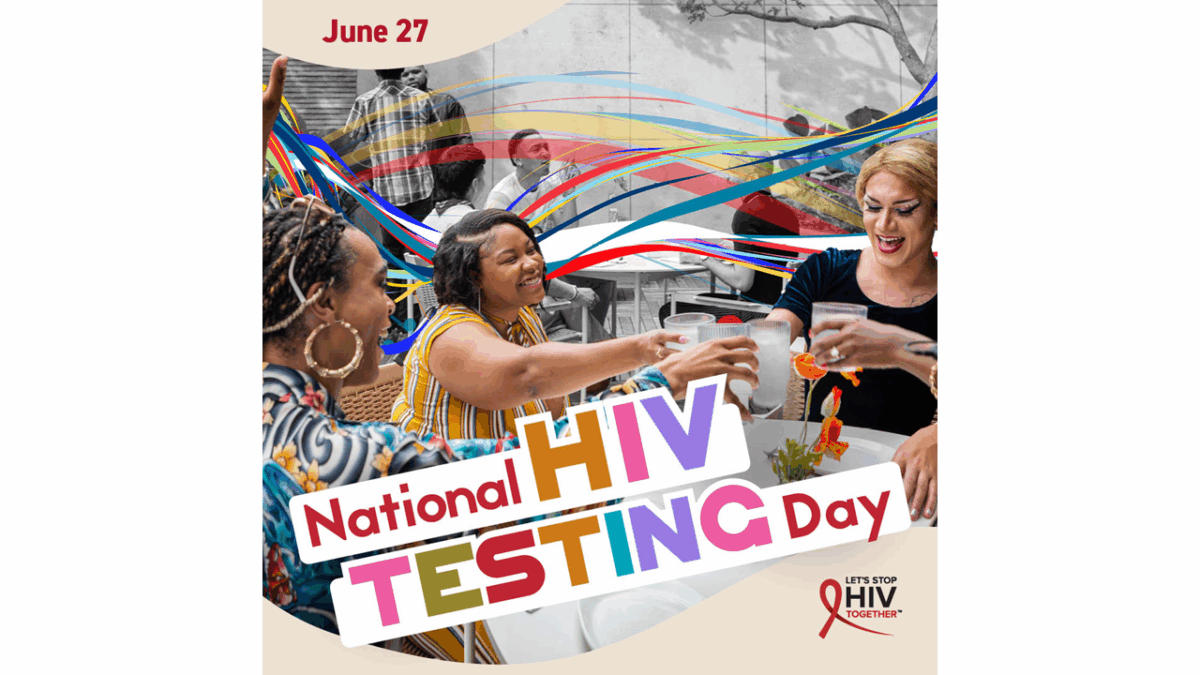Vaccines have been an integral piece of the global public health toolbox for over 200 years, but the COVID-19 pandemic brought about a new era in vaccine development with renewed interest in mRNA technology and unprecedented accelerated regulatory approvals. With over 13 billion doses of a COVID-19 vaccine having been administered worldwide, vaccine developers now face new and persistent challenges as they work towards preventing the spread of other infectious diseases.
Xtalks spoke with Maria Reyes Boceta-Muñoz, Clinical Operations Head of Development R&D at GlaxoSmithKline in Spain, Portugal & Israel, to understand the current vaccine development climate and where the sector is headed. With over two decades of experience in vaccine research, Boceta-Muñoz has experience across all clinical development phases in a range of therapeutic areas.

Clinical Operations Head of Development R&D
GSK Spain, Portugal & Israel
Boceta-Muñoz will be serving as the Chairperson for the Xtalks Vaccine Development Peer Circle, a high-level community of professionals focused on finding collaborative solutions to shared challenges in vaccine research. Click here to learn how you can participate in this mini think tank, and read on to gain more valuable insights from Boceta-Muñoz.
What are the major challenges you’re facing right now in vaccine development?
Boceta-Muñoz: One major challenge that exists is the production and distribution of vaccines for resource-constrained settings, which slows down the process of achieving global coverage. The ability to manufacture vaccines locally could greatly improve global vaccine access, but limitations in research, infrastructure, limited access to know-how and intellectual property barriers reduce the ability of these low-and-middle income countries (LMIC) to manufacture vaccines, which in turn enforces vaccine dependency, especially in an emergency situation.
Another challenge is addressing safety concerns, including fear of vaccine-associated enhanced disease (VAED), which is defined as the immune-mediated aggravation of the clinical course of infection following immunization relative to that in the absence of previous vaccination. VAED may be caused by different mechanisms that have not yet been entirely explored.
This is a threat to vaccine development, and presents a necessity to assess the safety of future vaccine candidates, the extent to which they might lead to VAED and how this can be minimized. Investigation of the possibility of VAED is crucial during clinical trials for decision-making on vaccine licensing by regulatory agencies.
In the majority of cases, the risk of VAED is brought to light during preclinical stages or early clinical trial phases. Nonetheless, VAED is quite infrequent and generally occurs long after immunization, as it manifests when (and only if) vaccine recipients are exposed to the pathogen and infected subsequent to vaccine administration.
Third is equitable representation in clinical trials, which is essential for the public health sector, particularly for countries with racially pluralistic societies. An understanding of how age, race, gender, underlying medical conditions and other factors can affect an individual’s response to a particular vaccine is critical for guiding effective patient healthcare. However, recruitment of minority groups in countries that aren’t as racially diverse can be quite challenging.
The cold chain is another major challenge. If it’s not managed properly, vaccines can suffer a loss of potency due to thermal denaturation or degradation. The maintenance of a continuous cold chain raises the costs of vaccines significantly, and many vaccines are discarded before their application because of exposure to sub-optimum temperatures. It is one of the most important challenges for the implementation of global vaccination programs. For the past few decades, various labs have been working toward devising technology for the development of thermostable vaccines.
Finally, addressing the time-consuming and costly transition from non-clinical to clinical development due to difficulties in predicting human immune responses is another issue. The EMA and other agencies have stringent regulations and guidelines that cover the design of clinical development programs for new vaccines intended to provide pre- and post-exposure prophylaxis against infectious diseases.
However, guidelines do not provide matters specific to each vaccine type. Therefore, planned protocols should specify in detail methodologies to be used to evaluate immune responses to vaccination. The methods should be consistent across studies, validated and reproducible.
XTALKS PEER CIRCLE: Vaccine Development Peer Circle
Members of this Peer Circle will gain access to other leaders in vaccine development and form a mini think tank to help solve pressing issues that they are facing in vaccine design, trials, regulatory approvals and distribution.
In what ways has the rapid development of the COVID-19 vaccines changed the vaccine development landscape as a whole?
Boceta-Muñoz: The COVID-19 pandemic has underlined the importance of collaborative efforts to effectively address new public health threats. At the same time, it has highlighted major stumbling blocks to such collaborative efforts in terms of access to, and interoperability of, heterogeneous health-related data.
Because one of the main challenges of the COVID-19 vaccine was accessibility for countries that couldn’t produce it, there is, after the pandemic, a tendency to move towards self-sufficiency in the pharma industry.
The clinical trial landscape overall has evolved significantly with key changes in the social, ethical and regulatory environment globally with the creation of guidance by regulators with new regulatory pathways for approval of products specifically developed for diseases in LMIC and public health emergencies. Patient advocacy groups have raised awareness of the health issues and the impact of clinical research in improving their quality of life. All these aspects have changed the environment with CTs in LMICs as an area of growth, where mainly late-stage trials of relevant vaccines (ex Ebola, CMV, RSV) are increasingly being conducted in LMICs.
Another impact related to ethical considerations is the weakness of evidence base, with decision-making processes lacking results from properly designed and conducted clinical trials. The result can be failure to use effective interventions or continuing use of ineffective/hazardous interventions leading to research waste, unnecessary harm and reduced trust. This problem is global, affecting high-, middle- and low-income countries, with some populations under-represented.
The accelerated development of the COVID-19 vaccines has demonstrated that it is possible to create effective and safe vaccines in a much shorter timeframe than previously thought, as well as being a breakthrough for mRNA vaccine technology.
Both vaccine equity and vaccine hesitancy are challenges in the space today. What are companies like GSK doing to address these issues?
Boceta-Muñoz: The COVID-19 pandemic made it clear that both vaccine equity and vaccine hesitancy are two of the most challenging factors in vaccine development. While vaccine equity means ensuring that everyone in the world has access to vaccines, vaccine hesitancy is defined as a delay in acceptance or denial of vaccination regardless of the accessibility of vaccination services. It is affected by factors such as complacency, convenience, confidence and cultural factors.
To address cultural considerations, it is essential that pharma companies work together with healthcare providers to promote trust in vaccines. One step toward doing this includes increasing enrollment of racially and ethnically diverse individuals in vaccine clinical trials, to ensure that everyone is represented, which improves the visibility and acceptability of vaccines: individuals can see that the vaccine is safe for them and not just for others. Research has shown that Black race survey respondents would be more comfortable with a vaccine if it had more testing on individuals of their own race and ethnicity.
Another factor influencing vaccine hesitancy is a group’s religious views, so it is important to also work with religious communities to address their concerns. Vaccine hesitancy is also very related to vaccine equity; it is important to ensure equitable access of vaccines into all communities. This includes distribution and availability of vaccines in community locations.
Education campaigns are also vital to improving vaccine uptake. It is important to do significant work outside the healthcare setting to promote vaccine equity and to share information about the safety and importance of vaccines. This could mean engagement with communities but also with political and media leaders to spread helpful information and face misinformation about vaccines.
What are your predictions for the future of vaccine development? How do you think artificial intelligence (AI) and machine learning (ML) will be involved?
Boceta-Muñoz: To improve the current state of vaccine development, a paradigm shift is needed. For most of the history of vaccine development, R&D efforts and funding have largely been focused on the disease-causing pathogen rather than the underlying human immune system responsible for protection against disease.
Another trend is that vaccine development is moving toward the need for quickness and readiness. To be ready for the next pandemic, we need vaccines even quicker. Emerging infectious diseases and outbreaks pose new challenges for vaccine development, requiring the rapid design and production of safe and effective vaccines against diseases with limited resources.
Another development that seems to be in the near future is the implementation of new technologies, such as the use of nanoparticles for vaccines against multiple diseases, including cancer.
The pandemic established a new path in which the collaboration between the pharma industry, government agencies, academia and regulatory bodies, as well as using modern technologies, was key to develop a rapid vaccine. Now, the focus has changed, and there is a new challenge for pharma and computer industry partnerships to develop AI-enabled clinical trial technologies or platforms.
This system integrates mathematical modeling, biological science and bioinformatics and it could identify, report and mitigate new drugs and vaccines faster. Suitable patient enrollment is necessary for cohort composition design, and if trials used AI, they could move towards patient selection by using omics data along with electronic medical records.
Patient dropout is also a big concern in clinical trials — with a high dropout rate, there could be an impact on integrity and validity of the clinical trial, meaning failure to reach the study endpoints and thus research waste. AI may predict whether or not patients drop out, therefore reducing delays in trials.
What strategies has GSK implemented to make vaccine clinical trials more efficient and effective?
Boceta-Muñoz: In addressing the efficiency and effectiveness of vaccine clinical trials at GSK, our main strategy involves the execution of parallel steps working with agile methodology and focusing on critical activities to deliver the programs with quality and on time. This means being proactively ready and prepared well in advance of key milestones. Like many other projects, it’s crucial to have a contingency plan in place, rather than just preparing for the most favorable scenario.
A significant aspect of our approach is understanding the complexities involved in vaccine trials, which are common to pharmaceuticals as well. The key difference with vaccines is their biological nature, which adds layers of complexity to the production and supply chain.
Coordination and matrix accountability are important in our strategy, requiring close alignment among various internal and external stakeholders, along with proper risk management in place. This ensures we can implement mitigation actions effectively and initiate trials on schedule. Another factor to consider is the larger volume of subjects typically involved in vaccine trials compared to pharmaceutical products.
Regulatory aspects also play a pivotal role. Our learnings from the pandemic have highlighted the importance of integrating a public health perspective in our vaccine studies. Understanding the broader environment surrounding vaccines is essential for a flawless execution.
Applying innovative ways of working to optimize the critical steps during the end-to-end of a study is essential. From clinical protocol development until the clinical study report is complete (to highlight regulatory submission, study start-up, enrollment & monitoring, in-stream data cleaning, database release and clinical study report), using breakthrough technology & AI tools is instrumental to accelerating processes for faster execution and having our vaccines and medicines readily accessible to cover unmet medical needs.
Engaging and partnering with investigators and third parties is essential to achieve this, as well as including the voice of patients and limiting the burden of protocols on them. The use of digital tools for participants (such as mobile apps and social media) is being implemented to facilitate access to clinical trials, alleviate the patient burden, increase the diversity of participants and accelerate the approval process of new vaccines and medicines. The use of AI-enabled technologies has started transforming our approach in clinical trials, allowing us to reshape the key steps of design.
What are some of the major regulatory challenges faced during vaccine clinical trials and how does your team navigate these?
Boceta-Muñoz: Regulatory challenges in vaccine clinical trials include strict safety and efficacy standards, such as:
- There are not always surrogate protection markers available
- Difficult to define clinical endpoints for diseases with complex interactions between the host and the pathogen or with a complex pathophysiology
- Difficult to measure the protective effect of a vaccine against chronic diseases and neoplasms that take a long time to appear after infection
Ethical considerations are important, particularly in including diverse participants and vulnerable populations (such as pediatric, elderly and immunocompromised groups) where many vaccines are targeted. On this matter, safety requirements and the balance between risk and efficacy are closely monitored by authorities due to their great impact on public health.
Dynamic and evolving regulatory requirements pose a challenge and are linked to vaccines as biological products: pre-clinical, clinical manufacturing and control for which there are complex aspects such as the formulation of the vaccine, compatibility among components, interference and stability, lot consistency, high scale production and manufacturing.
For some vaccine development programs, such as with seasonal vaccines (like for the flu or RSV), an accelerated regulatory review process is crucial since the enrollment period should be coincident with the seasonality of the virus. In this regard, early engagement and partnership with authorities to align the entire framework of the clinical development program is essential. A key learning that we have learned during the COVID-19 pandemic is the opportunity to fast-track studies in response to public health needs. This has been a prime example of how aligning all key stakeholders towards a single objective can streamline the regulatory process. Such collaboration not only accelerates the process but also contributes significantly to public health by ensuring the timely availability of vaccines.
In Europe, with the new EU Clinical Trial Regulation effective as of January 31st 2022, the coordinated regulatory submission through a single portal CTIS (Clinical Trial Information System) and aligned documentation across member states would contribute to harmonisation and simplification of the whole process. Currently, we are in the early days, and all players (Sponsors, National Competent Authorities & Ethics Committees) are under a learning curve and are facing challenges yet the expectation is to attract & simplify clinical research.
How do you manage the complexities of conducting vaccine clinical trials across different countries with varying regulations and cultural considerations?
Boceta-Muñoz: Managing the complexities of global vaccine clinical trials is indeed a significant challenge, particularly due to the diverse regulatory landscapes and cultural considerations across countries. One critical aspect is ensuring the representation of different races and ethnicities in these trials. This is especially important in vaccine development, as our goal often includes the elimination or eradication of diseases, underlining a public health approach that requires broad inclusivity.
Navigating the varying regulatory environments is another key element. The epidemiological differences between regions mean that we need to adapt our approach accordingly, while also being agile in our study development to address unmet medical needs promptly.
Time management is crucial in this context. We must balance the need for swift development and deployment of vaccines with the diverse requirements of different countries. The logistical aspects, such as informed consent procedures, cold chain management and the overall logistics of conducting trials, vary significantly between lower-middle-income countries, like Tanzania or Congo, and high-income countries.
There’s also a need for broader representation from lower- and middle-income countries in clinical trials, a direction in which GSK is actively working. While we have clear guidelines from the FDA regarding diversity, such guidelines are less established in other regions like Europe or Asia Pacific.
What has been the most rewarding aspect of your work in vaccine clinical trials and what keeps you motivated in this challenging field?
Boceta-Muñoz: The most rewarding aspect of my work in vaccine clinical trials, without a doubt, is witnessing the substantial impact of our efforts. In my experience, the probability of success in vaccine development is notably higher than in medicines. This has allowed me to see numerous projects evolve from initial phases all the way to fully implemented, marketed vaccines reaching populations worldwide.
There is immense satisfaction in knowing that vaccines, akin to potable water, are pivotal tools in disease prevention and eradication. The power and impact of vaccines in preventing diseases across diverse populations, including vulnerable groups like children, newborns, preterm babies and the immunocompromised, are greatly fulfilling. The ability to alleviate pain and prevent death through our work is truly rewarding.
Additionally, the public health aspect of this work is very motivating. Contributing to global health and witnessing the positive outcomes of our vaccines fuels my passion for this field. Despite the numerous challenges we face, such as supply chain complexities and the inherent unpredictability associated with biological products, the real-world impact of our work provides great satisfaction and keeps me motivated in the landscape of vaccine clinical trials.
References
Leroux-Roels et al. Chapter 5 in: Garçon et al. Conocimiento de las vacunas modernas, perspectivas de la vacunología, Vol 1, Amsterdam, Elsevier, 2011, pp. 115–50; Harper. Therapy 2008;5(3):313–24.
Bin Zhang et al. Harnessing artificial intelligence to improve clinical trial design. COMMUNICATIONS MEDICINE | https://doi.org/10.1038/s43856-023-00425-3
The vaccines industry has made incredible leaps in innovation during the past three years, but there are still many challenges and opportunities to protect the world from infectious diseases.
Join Boceta-Muñoz and other senior leaders in vaccine development in the upcoming Xtalks Vaccine Development Peer Circle for the opportunity to find creative solutions to these challenges in a collaborative environment.












Join or login to leave a comment
JOIN LOGIN